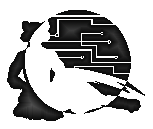Felitaur Site
Offerings
|
|
Intro to Linux CIS 126DL
Lecture Overview Index | Linux SysAdmin Homepage
| Overview |
Goals for this Topic:
- Understand the basic History of UNIX/Linux
- Know why UNIX/Linux is used
- Learn how to log on to Linux machines via ssh (secure shell)
- Know how to properly disconnect from a Linux machine.
- Understand what is meant by "This is a server oriented class" and not
a "desktop or workstation" class.
- Know the four parts of an "Operating System"
The following programs/files/directories will be discussed for this
topic:
- ^c (ctrl c) and ^l (ctrl l)
- Putty (a ssh client for windows)
- exit
|
| Questions |
- What group was involved in creating UNIX? What did they first try to
make?
- Who were the people involved in making UNIX? For Linux? What were their reasons?
- Why did UNIX (and later Linux) become so widespread? What language was it converted to,
so as to make it more portable?
- Who invented that language, and where did he work?
- Why do we use ssh and not telnet?
- How do you properly disconnect from our Linux machine?
- What is meant by the "flavors of UNIX/Linux"? And what flavor are we using
right now?
- When was Linux Created? By who?
- How is a "server" machine different from a "desktop or workstation"
machine? Can a machine be both?
- What are the four parts of an OS? What do some "purists" argue is the
onlye ONE part of an OS?
|
| Activities & Assignments |
- Go to my internet
page and check out the "Web page resources" section, and find both the
"Cheat Sheet for Lampbusters Students" and the link to download Putty.
- Use the cheat sheet to log into lampbusters.com using putty. You can create a
web page if you want, but it's not required.
- Try the ^c and ^l commands, see if you can figure them out.
- Please read How to Survive this
Course
|
| Resources |
- As always, the book's index, or one of the many resources on the How to find answers page.
- And of course, the main website for your os (CentOS) and search engines
such as Google one of my favorites.
|
|
|


